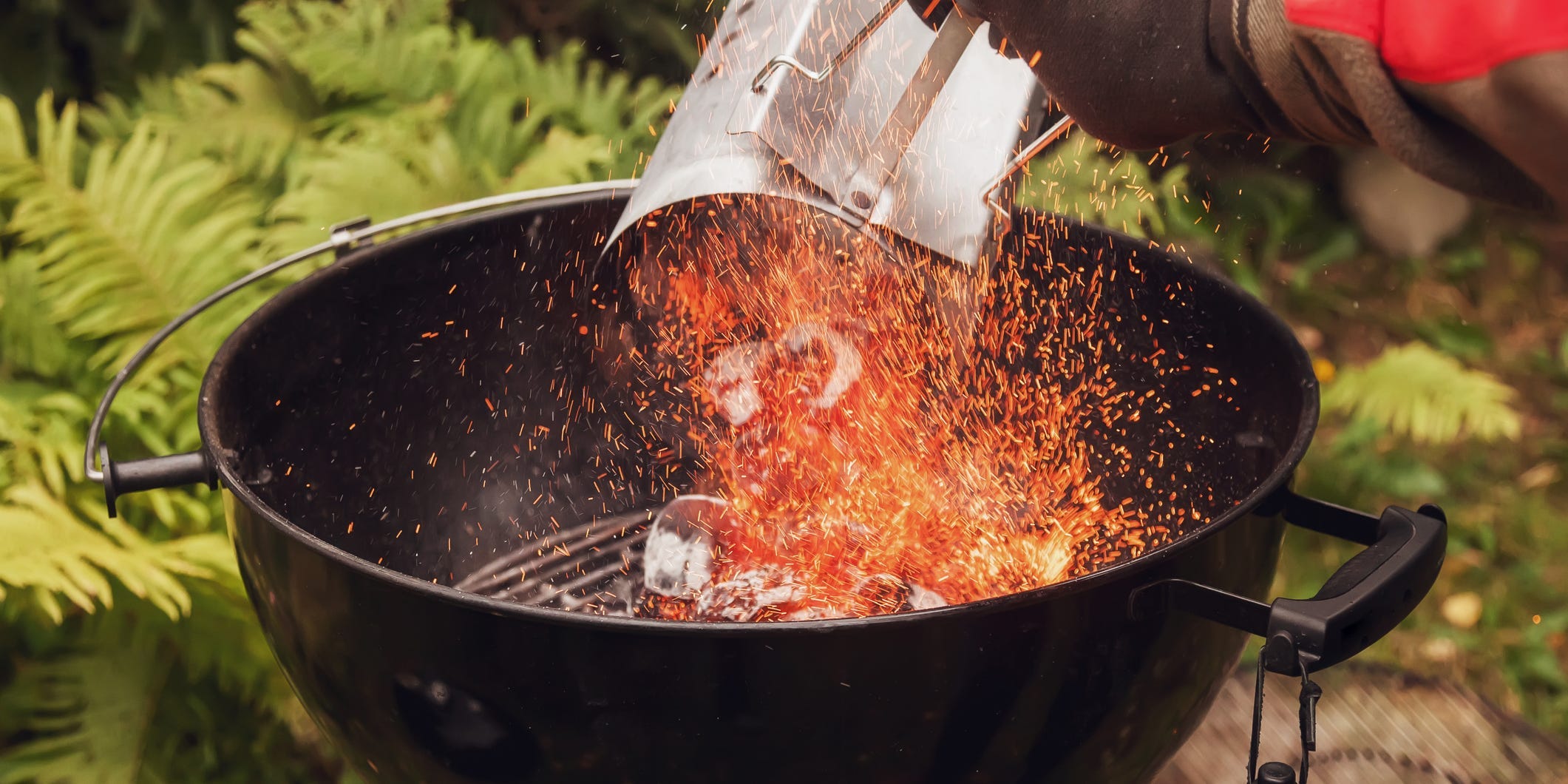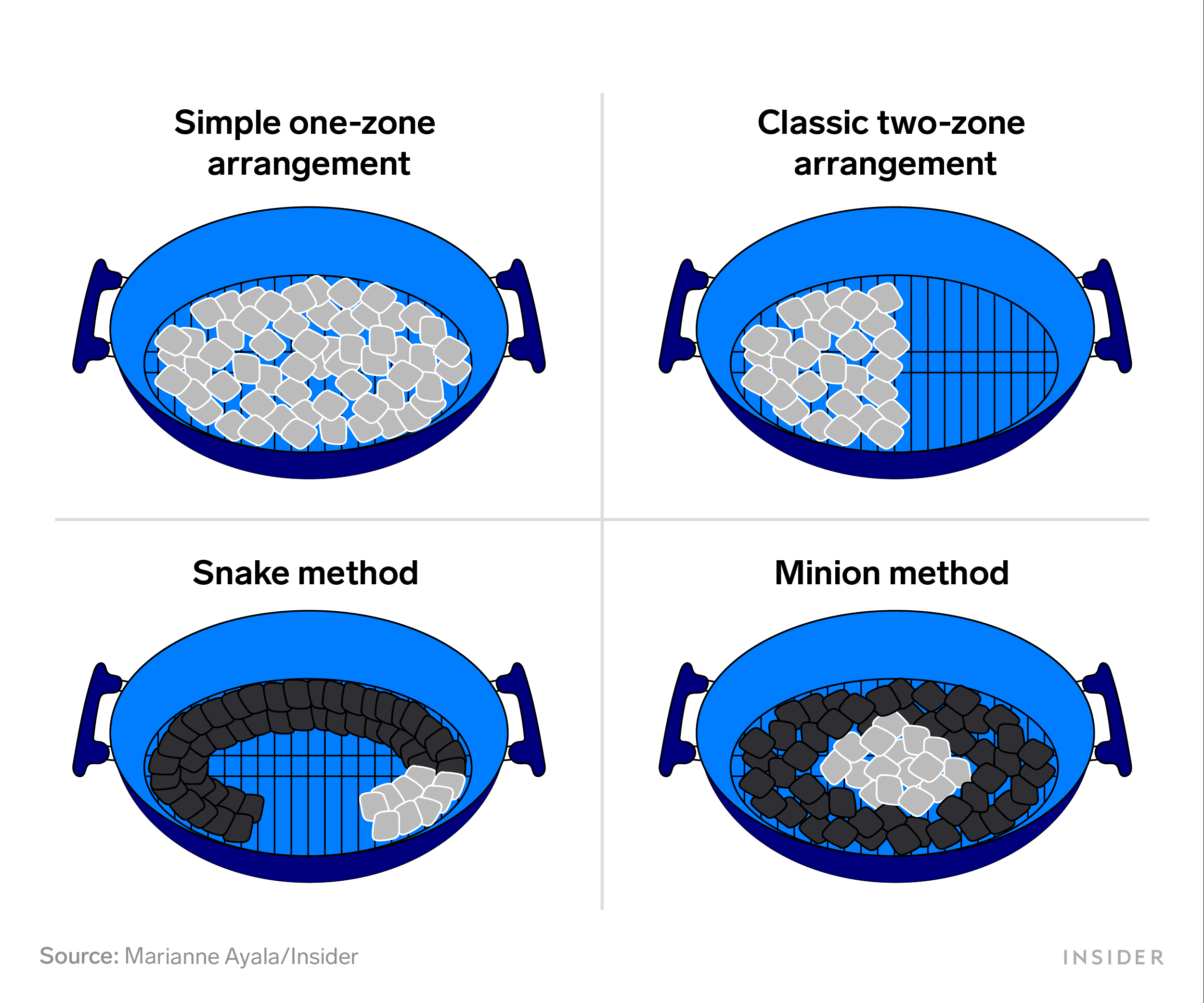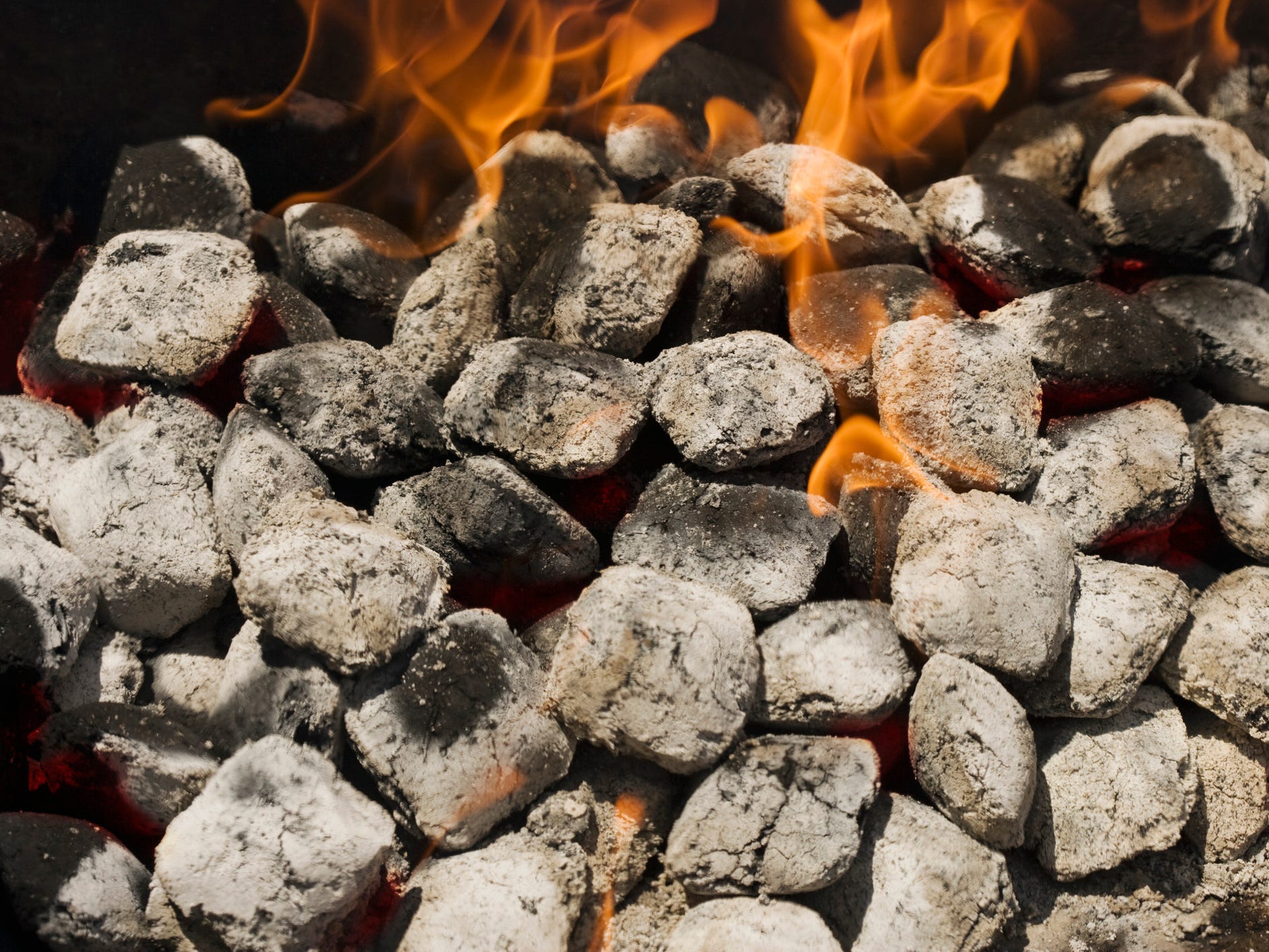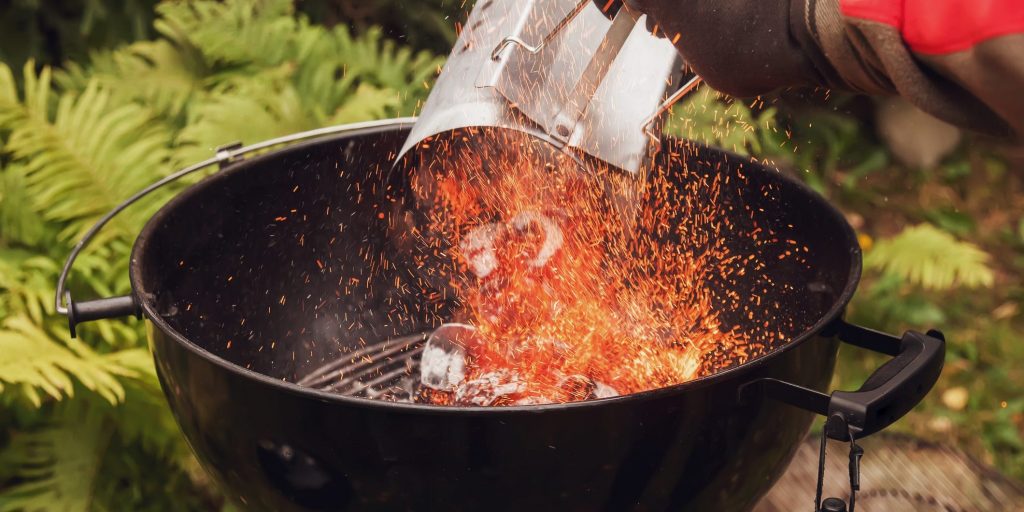
- The easiest and safest ways to start a charcoal grill do not require lighter fluid.
- For a hotter, faster cook, use more charcoal; for a slower, steadier cook, use less.
- Preheat charcoal until they're grayish-white to achieve the proper temperature before grilling.
- Visit Insider's Home & Kitchen Reference library for more stories.
Starting a charcoal grill isn't quite as straightforward as turning on a stove, so Matt Groark of Groark Boys BBQ and Liam and Myles Snider of Mother Tongue break down the steps below, along with the do's and don'ts.
Below you'll find easy step-by-step instructions to light a grill, whether you're using a chimney starter, lighter fluid, or no lighter fluid at all, plus how you should go about arranging your coals for a perfect cook.
How to choose the right charcoal
When choosing charcoal you'll want to find the right type for whatever it is you are cooking. Lump charcoal burns cleaner, hotter, and faster, while traditional briquettes burn slower and not as hot, according to Groark.
|
Lump Charcoal |
Briquettes |
|
Irregularly shaped charcoal made from natural hardwood |
Similarly shaped pieces of compressed coal dust or other combustible material |
|
Less ash |
More ash |
|
Hotter burn |
Cooler burn |
|
Faster burn |
Slower burn |
|
Natural and more expensive |
Less expensive |
|
Good for shorter cooks like vegetables, thin-cut meats, etc. |
Good for longer cooks like steak, full birds, etc. |
How much charcoal should you use?
Just as the type of charcoal may vary depending on what you are cooking, the amount of charcoal also changes depending on the temperature and cook time necessary for your dish. For most everyday cooks, Groark recommends half to 3/4 of a charcoal chimney.
While half to 3/4 of a chimney is a pretty safe rule of thumb, remember: too little charcoal could mean your grill doesn't get hot enough while too much charcoal could mean it gets too hot. Use less charcoal if you're cooking low and slow. Use more for fast, hot cooks.
If you don't have a chimney, use as much coal as you need to cover the bottom of whatever space you are cooking atop. If the charcoal starts to burn down on longer cooks, add more to the pile and keep grilling.
|
Amount of Charcoal |
Temperature |
Cook Time |
Grill Size |
|
¼ chimney |
Low heat |
Slow |
Small, Medium, or Large |
|
½ to ¾ chimney |
Medium heat |
Moderate |
Medium or Large |
|
¾ to 1 chimney |
High heat |
Fast |
Large |
What about using lighter fluid?
According to the experts, this is the least recommended of the three charcoal grill starting methods. Not only can it be dangerous, but it can also affect the taste of your food if not executed properly.
According to the Snider brothers, "many brands of lighter fluid are known to contain harmful chemical compounds that don't break down easily," which means they may end up in your food and potentially even making your food taste bad. For the same reason, they also suggest avoiding instant-light charcoal.
Should this be your only option, though, Groark reassures that, "As long as you allow [the lighter fluid] to burn off to that amber glow, you will taste nothing but that classic charcoal flavor."
1. Arrange charcoal on the grill. Place your charcoal in your preferred arrangement.
2. Douse the middle of the pile(s) in lighter fluid. Use approximately 1/4 cup of lighter fluid per pound of charcoal.
3. Light with a long lighter. Let the lighter fluid soak in for about 30 seconds first and back up when lighting in case of a flare-up.
4. Let the charcoals burn until they are grayish-white. This should take about 15 minutes.
How to arrange your charcoal
Now that you know how to light your charcoal, you'll also want to choose the best charcoal arrangement to properly prepare whatever food you are grilling.

Simple one-zone arrangement
Charcoal is arranged in a bed across the entire bottom of the grill. This is the most basic configuration but provides only direct heat.
When to use it: For grilling only food(s) that require direct, fast cooking.
Classic two-zone arrangement
Charcoal is arranged in the center of the grill or off to one side. This creates a two-zone configuration with a "hot zone" for searing and fast cooking over direct heat and a "cool zone" for slower cooking and resting foods over indirect heat. "[The cool zone] also gives you an area to move your food in case of flame flare-ups," the Sniders share.
When to use it: For grilling a variety of foods that require different temperatures and time cooking or to have the flexibility of being able to control the temperature as you grill.
Snake method
Unlit charcoal is arranged in a 300-degree circle around the perimeter of the grill with no charcoal in the middle. Lit charcoal briquettes are added to either end of the "snake" to ignite the charcoal over time and maintain steady heat for a long cook.
When to use it: For slow cooking or smoking foods for a long period of time.
Minion method
Unlit charcoal is arranged around a center pile of lit charcoal. The unlit charcoal slowly ignites over time for a steadier slow cook.
When to use it: For slow cooking or smoking foods for a long period of time.
When is charcoal ready to grill?

Tetra Images/Getty Images
When the charcoal turns grayish-white, you'll know it's ready to begin cooking. If you start grilling before this, the Sniders point out that the biggest consequence will be less heat.
"One of the biggest advantages of charcoal grills versus stovetops is that charcoal can get much hotter," the brothers said. "This allows you to achieve an incredible sear on meats and vegetables and creates new reactions that develop deep flavor. If you don't wait long enough for your charcoal to light up, you won't get this advantage."
Charcoal grilling safety tips
With any method of cooking, particularly when open flames are involved, ensuring you are following the proper safety protocols is essential.
No matter the method of starting your charcoal grill, to do so safely, be sure to:
- Never leave your grill unattended
- Avoid excess grease or oil which can cause flare-ups.
- Never douse your coals in lighter fluid once they are lit.
- Learn how to control the heat by adjusting the vent. A closed vent means less airflow and, therefore, lower temperatures. Alternatively, an open vent means more airflow and higher temperatures.
- Keep a "cool zone" on your grill with no charcoal beneath it so you can move your food if any flare-ups occur.
- Position your grill away from bushes, trees, your house, or anything else that could catch fire if hit by accidental sparks or flames.
- Be sure coals are extinguished before disposing of them.
Insider's takeaway
Though it may seem intimidating, lighting a charcoal grill is simple. Choose the charcoal type, lighting method, and amount that works for the food you are cooking and the size of your grill. Then decide how to arrange the charcoal in the grill.
Experts agree that using the chimney starter lighting method and cooking on a classic two-zone arrangement will give you the most control over safety, temperature, and amount of time grilling.
Above all else? Don't overthink it and enjoy the process. As Groark says, "nothing brings back the nostalgia of one's childhood cookout more than the smell and flavor of a meal grilled over charcoal."
